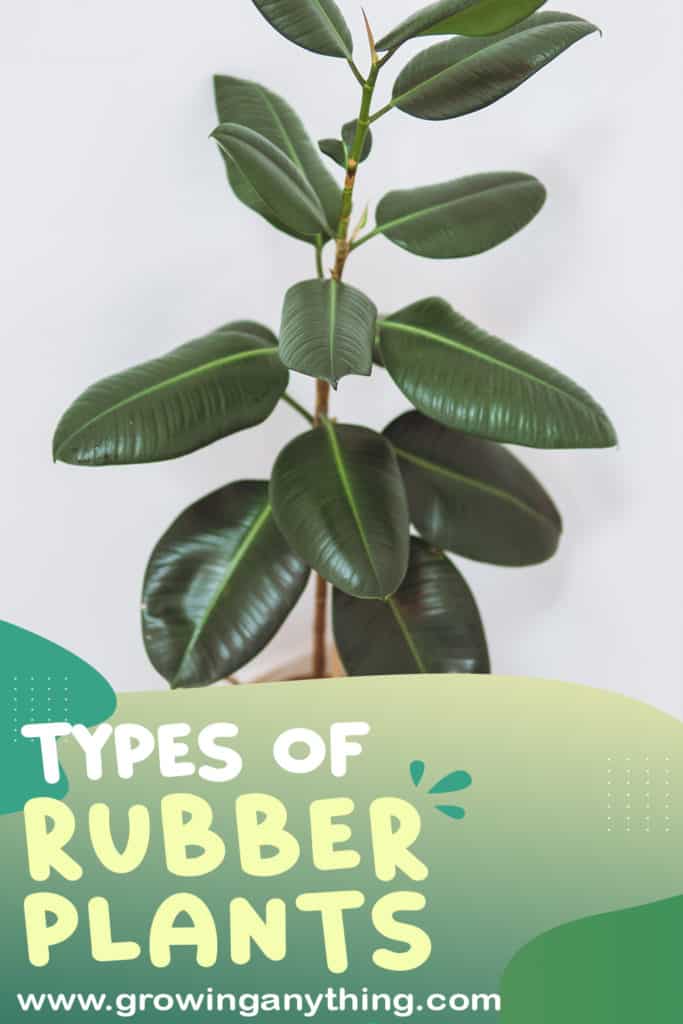19 Difference Types of Rubber Plants
Can you tell the difference between different types of Rubber plants? I guess you can distinguish the most popular varieties, including Ficus Leaf-Fig and the Creeping Fig. But, did you know that there are more than 15 types of the Ficus plant?
Most Rubber plants are easy to grow. However, their lighting requirements and adaptability differ. Keep reading to learn more about Rubber plant types so you can choose the best for your home!
Rubber plants are beautiful and known for their foliage. Most of the Rubber plants can be grown indoors and outdoors year-round in warmer USDA zones, such as 9, 10, and 11. In other zones, you can bring your plant outside when the weather is hot and bring it in when the temperatures drop.
Are you ready? Here are the best 19 types of Rubber plants!
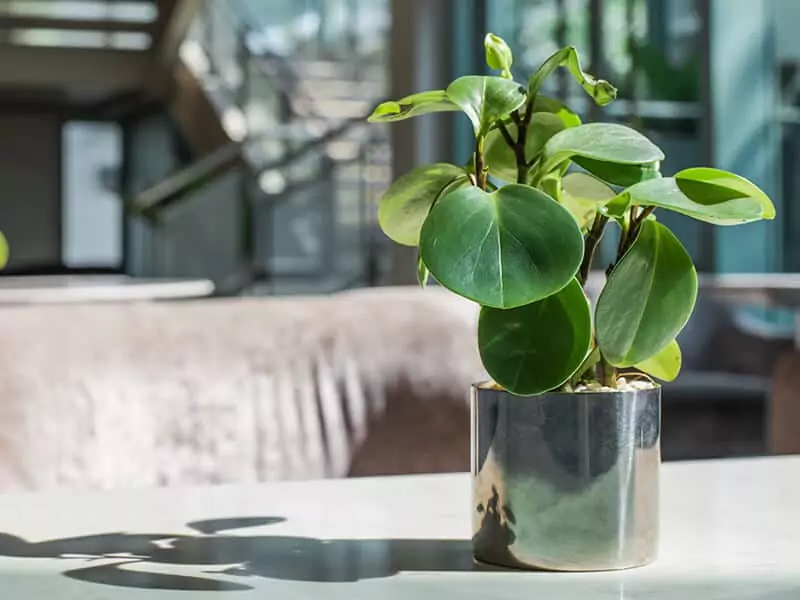
#1 Tineke
Ficus elastica Tineke or simply Tineke is one of the newer cultivars. Outside, the plant can grow up to 50 feet, but the average height of the plant is ten feet indoors.
The plant features beautiful glossy foliage in a combination of green and white. Sometimes, leaves look like watercolor and give the plant high ornamental value.
Indoor varieties rarely bloom, but if you live in the farmer zones, from nine to 11, keep your Tineke Rubber plant outdoors, and you may notice simple but elegant white flowers.
Read more about Tineke growing tips!
#2 Burgundy
Ficus elastica Burgundy is a beautiful indoor plant with dark burgundy and black leaves. People in the warmer zones grow it as canopy trees and it reaches more than 60 feet. Indoors, Burgundy ficus usually gets 6 feet tall.
The plant can survive low light conditions. But for fast growth, I recommend you put it near the sunny window. Overall, the plant is easy to care for and doesn’t mind being neglected. Water it when you notice the soil is dry and you can use Rubber tree fertilizer every several months to keep the plant healthy.
How to keep the Burgundy Rubber tree alive year-round? Click here to find out!
#3 Ruby
Ficus elastica Ruby is one of the most charming Rubber tree varieties. The multicolored leaves have high ornamental value and present unique decorations in every room.
The plant has typical Ficus leaves, wide and long, infused with pastel pink, yellow, green, and white. More than any other Ficus variety, the Ruby leaves like a watercolor piece of art!
But, Ficus Ruby needs a lot of light to ensure colorful leaves. If the plant doesn’t receive enough sunlight, it will lack the pinkish tint on the foliage.
Discover the full growing guide for Ficus Ruby here!
Learn the tricks to grow your Ruby plant as fast as possible. Watch the video:
#4 Black Prince
Ficus elastica Black Prince is a lovely, pet-friendly plant that has moderate air-purifying properties. Unlike some other varieties, the plant doesn’t light direct light and has too warm temperatures. If your Black Prince Ficus is exposed to strong light, the foliage will appear burnt and thinner. Instead, provide a source of indirect light.
Here is a trick to try when taking care of the Black Prince. Damp a cloth and go over leaves occasionally. It will keep them moist and fleshy, and improve their ability to absorb light. That way, the color will be richer, and the leaves will be shinier.
Read more about the uses of Black Prince!
#5 Doescheri
Ficus elastica Doescheri is an evergreen tree, another variation of Ficus elastica. The plant has distinct elliptic leaves in dark green.
It is recognizable by grey splotches of color on the leaves and white leaves edges. Moreover, the stalks and undersides are pastel pink, which makes the plant more charming.
The plant is a moderate grower. After ten or 15 years of proper care, your Doescheri Ficus will probably reach six feet indoors.
Find out the most important information on Ficus Doescheri.
#6 Abidjan
Ficus elastica Abidjan has a moderate to fast growth rate. It features large and thick, shiny leaves that look almost artificial in their perfection. Avoid exposing your plant to direct sunlight, as the Sun can burn the leaves.
But, the plant needs a lot of light to thrive. Also, some of the best growth care tips to remember are the weekly use of weak fertilizer, moderate watering and occasional misting! If the leaves start to drop and hang low, cut down the watering, as it is a symptom of overwatering.
Learn the basic information and more care tips on Ficus Abidjan!
#7 Melany
Ficus elastica Melany is a shiny and elegant variety of Ficus elastica. It is a sturdy tree with a bushy appearance. However, to ensure a richer and fuller look, you’ll have to prune the plant to support new growth.
The plant has dark green leaves with a transparent, reddish gleam.
It is not a pet-friendly plant because it has latex in the sap. People with latex allergies should skip the plant and choose some other Rubber trees.
Find out how much water does Ficus Melany needs!
#8 Creeping Fig
Ficus pumila or Creeping Fig is a vigorous climber and not a typical Fig. It looks beautiful when placed indoors in hanging baskets or trained to grow on a trellis.
Creeping Fig has heart-shaped leaves. If you grow it outdoors, you can expect the plant to bear flowers and fruits which give it an even more charming appearance.
Ficus pumila is a low-maintenance plant, indoor and outdoor with moderate water and light needs. Partial shade is the ideal location for Creeping Fig.
Find out how to take care of Creeping Fig indoors!
Discover how to repot Creeping Fig. Watch the video to know:
#9 Green Island Ficus
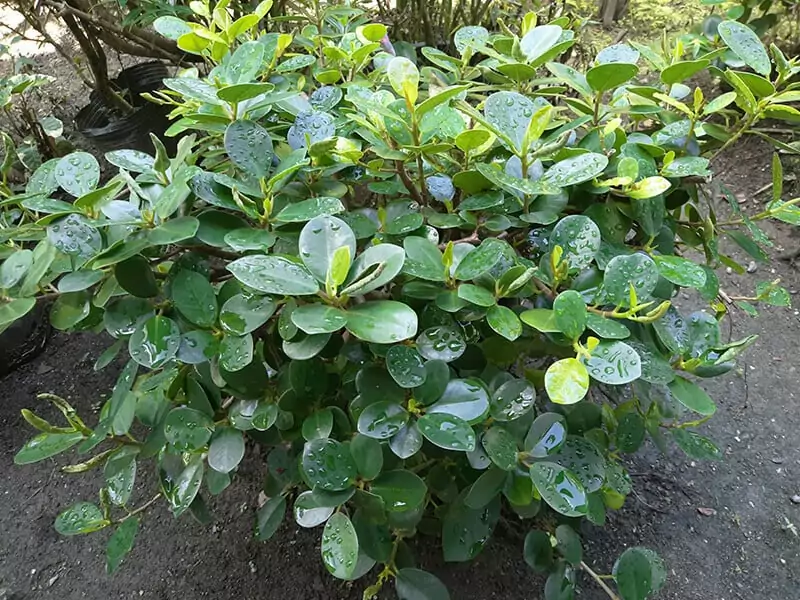
Ficus Microcarpa, variety Green Island is a rare and unjustly neglected Rubber plant. It grows in the form of a shrub and has been adored for its low-maintenance features. Green Island Ficus is commonly used for landscaping, especially in compact spaces. Unlike other Ficus plants, this one is not invasive, and it is a slow grower.
The plant grows in full sun and shade locations and is easy to mix with other varieties in formal and informal gardens.
If you choose to grow it indoors, pick a spot near the sunny window and use a slow-release fertilizer. It is also used as Bonsai plant.
Find out all the ways you can use Green Island Ficus for landscaping!
#10 Belize
Ficus Elastica Belize looks similar to the Ruby variety, but it is easier to care for and the plant will maintain its pink spots easily. Even in the low light conditions, Belize Ficus leaves remain multicolored with dark green, pink and white splashes of color.
The key to keeping the plant healthy is to keep the soil moist but resist the urge to overwater the plant. Wait until the top layer of soil is dry to water the plant.
Discover more differences between Ruby and Belize Rubber plants!
#11 Fiddle Leaf Fig
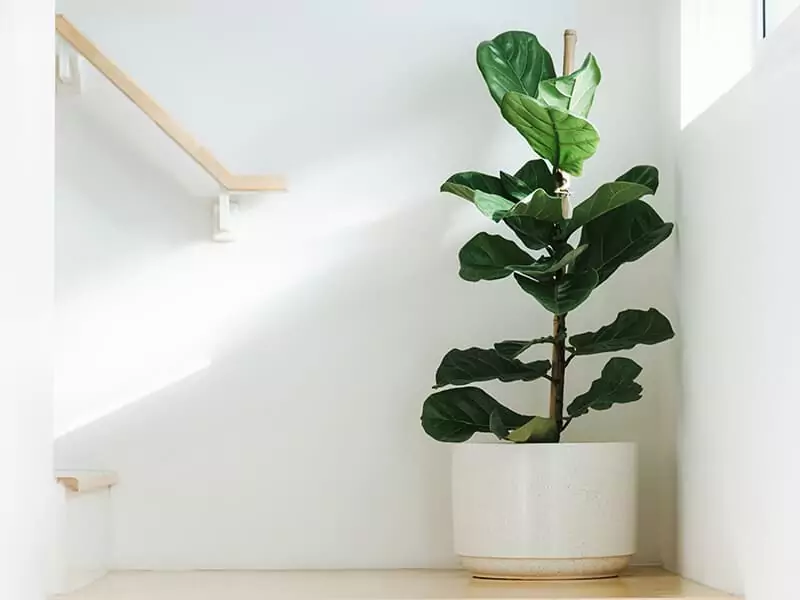
Ficus lyrata or Fiddle Leaf Fig is the most popular variety of Rubber tree, and one of the most common household plants. The plant has a slim and upright trunk that bears large, shiny foliage, shaped like violins.
Leaves grow upright and give the plant a richer and more elegant look. Indoors, the plant usually gets around ten feet tall. Outside, the average height is five times bigger.
Fiddle Leaf Fig is easy to care for, which is one of the reasons why the plant is so popular.
All you have to do is keep the soil moist but not soggy and ensure optimal temperature and humidity.
Find out more about the most popular Ficus variety ever!
#12 Tricolor
Ficus elastica Tricolor has deep green leaves with pink splotches of color infused with snowy white variegation. Also, the leaves transform to grey-green sometimes and have high ornamental value.
The plant has multiple stems and an upright growing habit. You can prune it to keep the shape you prefer. When you grow it indoors, the plant will reach ten feet in height. The average spread you can expect is around five feet.
The Tricolor Rubber plant has a long lifespan. With proper care, the plant can stay alive for more than half a century!
Find out how to take care of Tricolor Ficus.
#13 Weeping Fig
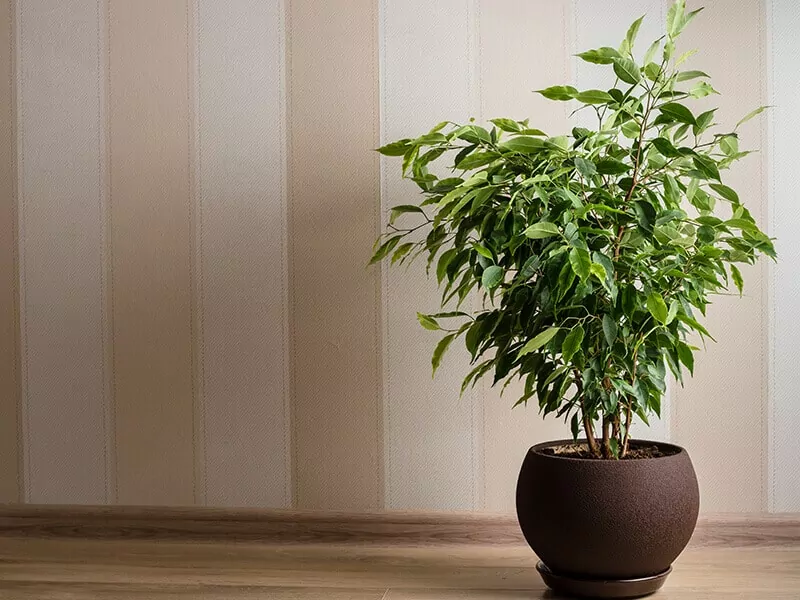
Ficus Benjamina is known as Weeping Fig. It is a very popular variety and people often call it Benjamin.
Benjamin has thin branches and smaller leaves than the rest of the Rubber plants. Normally, the plant reaches up to six feet when grown indoors, and people prune it to stay off that height because it is a fast grower.
If you like this simple and elegant plant, keep in mind that it is toxic to animals and people. So, pick a spot for the plant away from kids and pets reach.
Benjamin Ficus thrives in places with a lot of sunlight. It has moderate needs for water and fertilizer and is relatively easy to grow.
Learn how to take care of the Benjamin Rubber plant.
Find out the best way to propagate Benjamin Ficus. Watch this video below:
#14 Banana Leaf Fig
Ficus maclellandii or Ficus Alii is a narrow-leaved Rubber plant. It is easier to grow than most other Rubber plants and adapts to different lighting conditions better. The plant is often called Banana Leaf Fig.
It grows in the form of a small, ornamental tree that usually doesn’t grow over 12 feet indoors. Outdoors, the tree is significantly taller.
Banana Leaf Fig is like other Rubber plants, grown for its foliage. Young leaves appear red and slowly transform to deep green with a leathery finish.
You can grow it as a single or multi-stem plant.
Additionally, some people like to braid stems, which give the plant a unique appearance.
Discover the full guide on how to take care of this type of Rubber plant!
#15 Banyan Fig
Ficus Benghalensis or Banyan Fig, or Audrey Fig looks different from other Rubber plants. It is also a national and sacred tree in India, its native habitat.
The plant has large elliptic leaves and is a relatively low-maintenance plant.
Also, this Rubber tree type is known for the whitish bark and woody trunk. When grown outdoors, the Banyan Fig develops multiple flowers.
#16 Robusta
Ficus Elastica Robusta has a retro-chic due to broad and shiny leaves. It is a perfect housewarming gift, and the plant has air-purifying capabilities, more than most other Rubber plants.
The plant enjoys bright indirect light. However, because it tolerates shade, it is also one of the best plants to place in the office.
The Robusta variety looks very similar to the original Rubber plant. But, the foliage is glossier, and the plant is more adaptable to different growing conditions.
Find out how tall the Robusta Rubber plant can get indoors!
#17 Yellow Gem
Ficus Altissima or Yellow Gem might be the perfect plant for you if you prefer bright green plants over pinkish and purple varieties.
The plant has bright yellow-green leaves that have a distinctly tropical vibe. In standard indoor conditions, the plant grows up to nine feet.
The plant grows best in a well-drained potting mix. You need to water it less frequently in the winter and keep the soil moist in the summer. Yellow Gem is an adaptable plant that can tolerate a short drought period and a wide range of temperatures.
Find out more about this tropical Rubber plant!
#18 Sofia
Ficus Elastica Sofia features sturdy stems and broad and thick leaves. The plant grows in the indirect bright light but may grow well in the partial shade locations.
Sofia benefits from occasional fertilization in the summer and regular leaves misting. Don’t overwater the plant, and only water when the top layer of the soil seems dry. Similar to other Rubber plants, Sofia removes chemical toxins from the air.
Here is what you need to know about Ficus Sofia.
#19 Lemon Lime
Ficus Altissima Variegata or Lemon Lime Ficus is a tropical-looking Rubber plant with neon green splotches of color on the large green leaves. The green fusion on the foliage instantly brightens any space and pairs well with other plants. Lemon Lime Ficus is a low-maintenance plant that enjoys exposure to full light. The lighter the plant absorbs, the brighter the green foliage is.
The plant may need slow-release fertilizer twice time per year, and monthly use of liquid fertilizer during the warm periods.
Feed with slow-release fertilizer once every six months (refers to packaging for dosage).In the warmer months, feed monthly with a liquid fertilizer.
Lemon Lime Ficus thrives in warm temperatures and you can grow it outdoors in the summer.
Do you want to know more about Lemon Lime Ficus? Click here to find out!
A close-up guide to the propagation of Lemon Lime Tree. Watch this video:
Whichever Ficus You Choose, You Won’t Regret
All Rubber plant types have numerous benefits. Some of them include air purifying, anti-allergic properties, low maintenance, and high ornamental value! Rubber plants pair well with other flowering plants and small ornamental trees. These plants are also considered to bring luck and prosperity to people!
My favorite is the Ruby Rubber plant because of the colorful leaves! Which Rubber plant is your favorite?
Please share your preferences in the comments! Come back for more articles on modern gardening!
